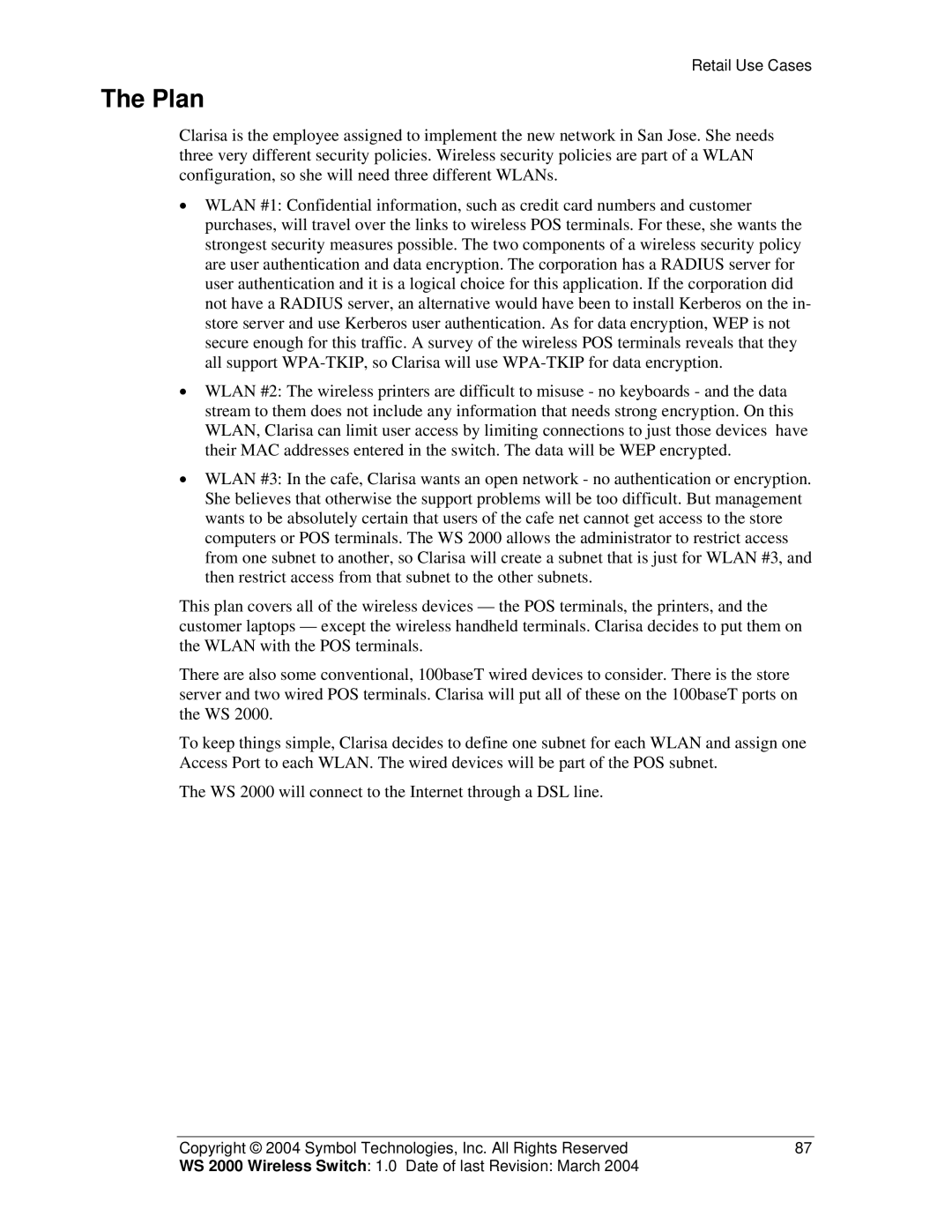Retail Use Cases
The Plan
Clarisa is the employee assigned to implement the new network in San Jose. She needs three very different security policies. Wireless security policies are part of a WLAN configuration, so she will need three different WLANs.
•WLAN #1: Confidential information, such as credit card numbers and customer purchases, will travel over the links to wireless POS terminals. For these, she wants the strongest security measures possible. The two components of a wireless security policy are user authentication and data encryption. The corporation has a RADIUS server for user authentication and it is a logical choice for this application. If the corporation did not have a RADIUS server, an alternative would have been to install Kerberos on the in- store server and use Kerberos user authentication. As for data encryption, WEP is not secure enough for this traffic. A survey of the wireless POS terminals reveals that they all support
•WLAN #2: The wireless printers are difficult to misuse - no keyboards - and the data stream to them does not include any information that needs strong encryption. On this WLAN, Clarisa can limit user access by limiting connections to just those devices have their MAC addresses entered in the switch. The data will be WEP encrypted.
•WLAN #3: In the cafe, Clarisa wants an open network - no authentication or encryption. She believes that otherwise the support problems will be too difficult. But management wants to be absolutely certain that users of the cafe net cannot get access to the store computers or POS terminals. The WS 2000 allows the administrator to restrict access from one subnet to another, so Clarisa will create a subnet that is just for WLAN #3, and then restrict access from that subnet to the other subnets.
This plan covers all of the wireless devices — the POS terminals, the printers, and the customer laptops — except the wireless handheld terminals. Clarisa decides to put them on the WLAN with the POS terminals.
There are also some conventional, 100baseT wired devices to consider. There is the store server and two wired POS terminals. Clarisa will put all of these on the 100baseT ports on the WS 2000.
To keep things simple, Clarisa decides to define one subnet for each WLAN and assign one Access Port to each WLAN. The wired devices will be part of the POS subnet.
The WS 2000 will connect to the Internet through a DSL line.
Copyright © 2004 Symbol Technologies, Inc. All Rights Reserved | 87 |
WS 2000 Wireless Switch: 1.0 Date of last Revision: March 2004 |
|
